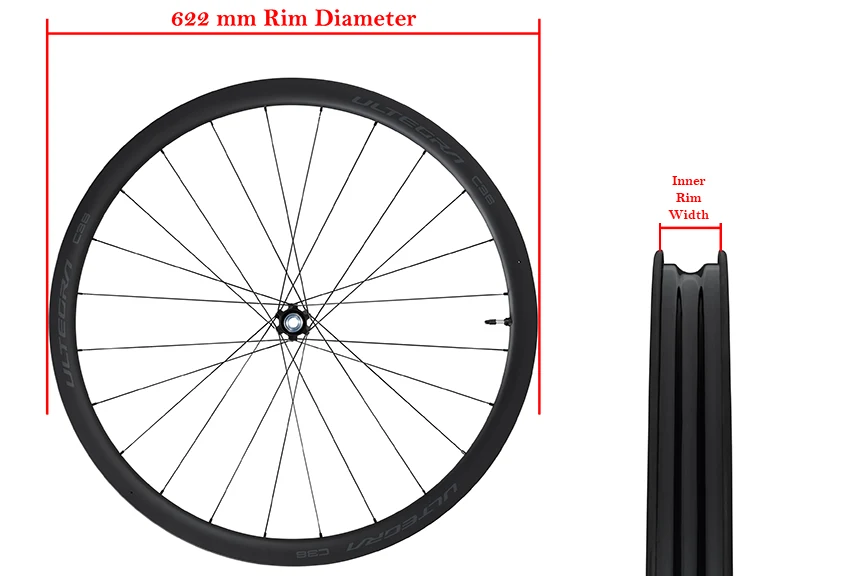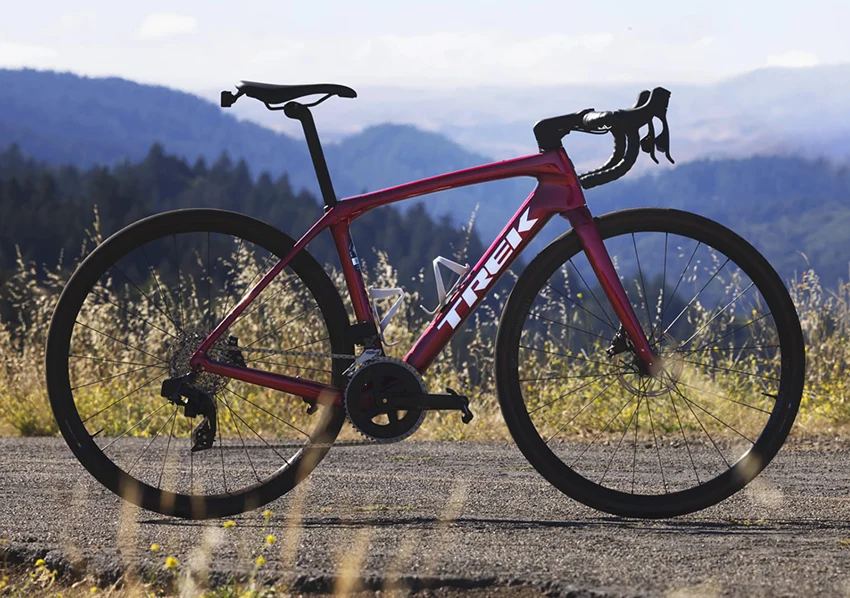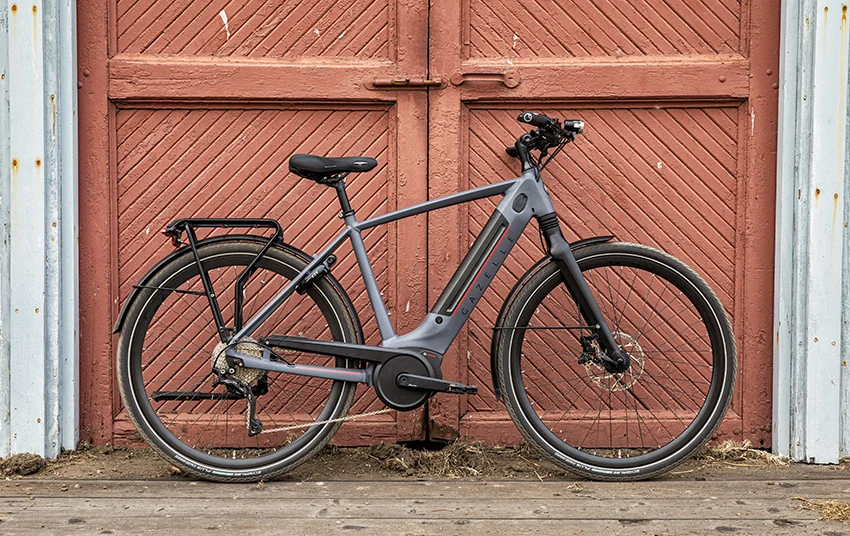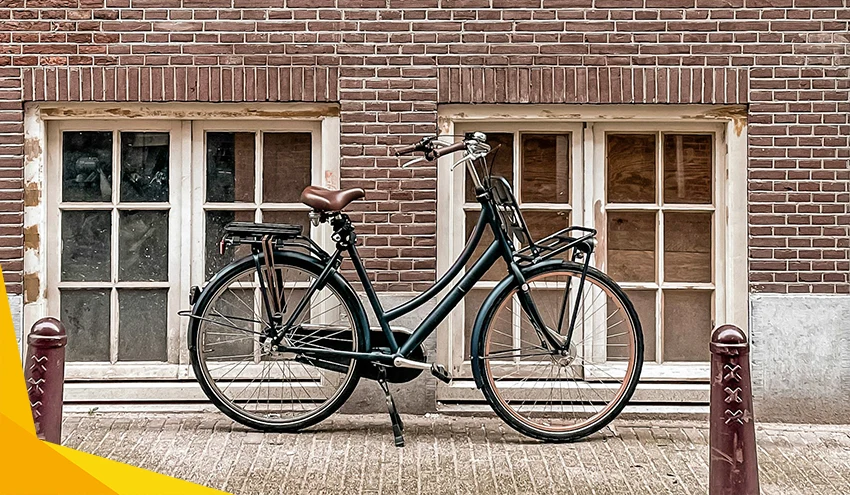Bicycle wheel sizes aren’t as straightforward as they could be. While standardization has improved in recent decades with the introduction of the International Organization for Standardization’s ISO 5775, relics of previous measuring systems remain. This often leads to confusion among cyclists.
Initially, a 700c wheel was one with a rough diameter of 700mm measuring from the outside of the tire. Now, with ISO standardization, it’s considered the width of the rim only, not including the tire. The ISO measurement for a 700c rim is 622mm.
The international adoption of ISO standards (taken from the European Tire and Rim Technical Organization) makes it easier for us regular cyclists to find the correct wheel and tire sizes while simplifying manufacturing processes.
In this article, we’ll discuss 700c wheel size and where it’s most commonly used, compare it to other wheel sizes, and finish with some pros and cons of 700c wheels.
See also: Bike Wheel Sizes Explained
Contents
What Size Is a 700c Wheel?

The 700c wheel size is ubiquitous in road biking. It’s also the most popular wheel size for best gravel bikes (though 650b is catching up) and is also found on many of the best hybrid bikes.
As described above, the diameter measurement “700” was used to refer to a 700mm diameter of the tire and rim combined. While rim diameters are consistent, tires have varying widths, tread profiles, and thicknesses, so the final measurement was rarely 700mm.
Because of this tire variation, it makes more sense to choose a measurement based solely on the rim and then manufacture tires to fit that, disregarding the final rim and tire diameter. The ISO standards help achieve this.
The 700c wheel size, standard in road and gravel biking, refers to a standardized rim diameter of 622mm, allowing for cross-compatible tire use despite manufacturing variations.
Today, a 700c rim is one with a bead seat diameter (BSD) of 622mm; so, in theory, all tires manufactured for 700c wheels should be cross-compatible.
As any experienced cyclist knows, there is variation in how precisely tires are manufactured. While one tire may slip onto your wheel easily and seat without issue, another will be so tight that it requires professional help to remove.
What Does the “C” Stand For?
The “c” is for “crochet,” from an antiquated French measuring system that used the letters A through D to represent 700mm wheels of differing widths. A was the widest; D was the narrowest. Different tires were required for the four unique bead seat diameters, but this meant frames could take different tire widths, albeit requiring a different set of rims.
Over time, 700a, 700b, and 700d were made obsolete, and we were left with 700c. The obsolescence of this system means neither the “700” nor the “c” of 700c have any real significance in modern cycling.
Comparison with Other Wheel Sizes

Over the last few decades, bike wheel sizes have come and gone.
With the widespread adoption of ISO 5775 sizing standards, it’s now easier to understand the different wheel sizes, their uses, and their pros and cons.
Here are some of the most common wheel sizes, their corresponding ISO measurements, and typical uses:
- 700c, 622mm – Road, gravel, hybrid bikes
- 29-inch, 622mm – Mountain bikes
- 28-inch, 622mm – Hybrid bikes (still used by continental EU brands like Gazelle)
- 27.5-inch, 584mm – Mountain, gravel, hybrid bikes
- 650b, 584mm – Gravel, hybrid, small-size road bikes
- 26-inch, 559mm – Mountain, fat tire, e-bikes
700c vs. 29-Inch Wheels

The 29″ wheels are one of the newer sizes, originating from the mountain biking discipline. At first, production MTBs had 26″ inch wheels; later, larger 29ers wheels became popular, and then 27.5″ wheels. Within mountain biking, 26-inch wheels were ultimately relegated to niche bike styles like dirt jump and fat tire bikes.
As the table above shows, 700c and 29-inch wheels have the same rim diameter: 622mm. However, the difference is in their width (inner and outer).
29″ wheels, used for mountain biking and not for road, are designed to support wider tires, so the rims are wider. Typically, the inner rim width for 29ers ranges from 25mm to 40mm. In contrast, it’s roughly 15mm to 25mm for modern 700c road rims and 25mm and 35mm for 700c gravel wheels.
The 29-inch and 700c wheels have the same outer rim diameter, but different inner rim width. The 29er wheels use a wider rim to accommodate wider tires for off-road riding, whereas 700c wheels are suitable for narrower road tires.
Wider rims (29ers) require more clearance in the frame and are heavier than narrower ones designed for road bikes. However, they’re typically more robust. Wider rims make it possible to fit wider tires, meaning increased stability, traction, and vibration dampening due to having a larger contact patch with the ground and higher air volume to absorb bumps.
The lighter, more aerodynamic 700c wheels sacrifice some strength and versatility to fit wider tires. Over time, though, 700c rims have gotten wider to support wider tires, as the sweet spot for tire width is now considered to be around 25-28mm rather than 20mm to 23mm, as previously thought.
700c vs. 650b Wheels

650b wheels are to 700c wheels what 27.5″ wheels are to 29ers. It’s a smaller diameter (584mm) rim that’s usually wider to support a wider tire.
The main benefit of this size, when compared to 700c, is that it’s possible to make a well-proportioned bike in the extra-small and small frame sizes, maintaining the same or similar geometry to the larger sizes that have 700c or 29″ wheels.
Like “700” wheels, “650” wheels were available in different configurations (650, 650a, 650b, or 650c); 650b is the one that survived the test of time. These wheels are found on many hybrids, gravel, and touring bikes.
Compared to 700c, 650b wheels usually support wider tires. This increases vibration-dampening comfort thanks to the extra air volume and ability to run lower tire pressures. Additionally, you get more traction and a lower standover height for smaller frames. However, the frame needs extra tire clearance to make this possible.
Many high-end gravel and bikepacking bikes can swap between 700c and 650b wheels to give you options for different terrains and rides (weekly group ride vs. multi-day bikepacking tour).
700c vs. 28″ Wheels

The “28-inch” label is rarely used in the United States. It comes from an old Northern European standard and continues being used there today, albeit with the ISO measurement of 622mm (like 700c and 29″).
The popular Dutch brand Gazelle, which has a strong base in the US, uses this label for its wheels. Likewise, Schwalbe also uses this label.
Again, 28″ rims, primarily used for hybrid bikes, are typically wider than 700c wheels found on pure road bikes. However, plenty of 700c hybrid bikes have wider rims identical to the 28″ ones found in Europe.
Advantages and Limitations of 700c Wheels

What are the advantages of 700c wheels?
Firstly, their popularity means the selection of tires and wheels on the market is enormous, making it easy to swap or upgrade. You can find something for every budget, terrain, and riding style. The limitation is typically your frame’s clearance.
Compared to smaller-diameter wheels, 700c is considered faster, especially over longer distances and on terrain that allows the building of momentum, such as on roads and light, non-technical trails.
One limitation of larger-diameter wheels is their reduced maneuverability compared to smaller ones. While this is more relevant off-road when comparing 29″ to 27.5″, gravel bikes with 650b wheels (instead of 700c) are usually better suited to technical off-roading.
700c wheels offer a wide selection and efficiency for speed over long distances, despite limitations in maneuverability and tire width compared to smaller wheels.
Another limitation of 700c wheels, compared to 650b, is that 650b (and 27.5″) supports wider tires, improving their versatility for off-roading, hence the increasing popularity of 650b tires in gravel. The final limitation of 700c wheels is that they typically don’t work well for very shorter riders who need an S, XS, or XXS size frame.
Ultimately, however, these strengths and limitations are less important than the quality of the tires and wheels, their suitability to the terrain you’re riding, and the pressures you run for the road or trail conditions.




